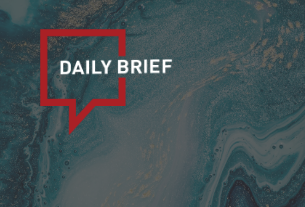When you enter a hotel website for a weekend break, family trip or business meeting, chances are the contents will be exactly the same. In fact, one could argue that a downloadable PDF might be almost the same experience.
Hotel websites, still today, are often mere online versions of brochures, to which a booking engine has been attached. Potential guests are shown a lot of static, yet gorgeous, content before they eventually click the “reserve” button, at which point they are taken off to a second system that does the heavy lifting.
There is nothing personal about it. And this is still happening now, in a time when people expect the right movie or product to be suggested to them without even searching for it.
According to Pepijn Rijvers, Booking.com’s CMO, “50% of Alibaba turnover last year was generated through personalized promotions, while only a small volume came through search.” Not to mention Google search, Facebook, Twitter and thousands of other personal recommendations, triggered automatically and without any active user interaction.
Online travel agencies have long since dropped this static approach. They tailor everything based on what their system thinks you want to see next. While, obviously, a hotel website can’t compete on all fronts, it should, at least, be able to tailor the experience around their potential guests’ needs.
With that in mind, in 2009, Avvio began a research and development project to experiment with artificial intelligence and personalization and how we could use them to improve the direct booking experience. Back then, Booking.com was not yet very well-known outside of Europe, the iPhone had only been around for a couple of years and cloud-computing was mainly a buzzword.
Our initial goal was to prove that a hotel website could (and should) be much more than a mere digital copy of a brochure. We felt that hotel websites needed to move out of the passive brochure model into something much more personalized that could make better use of all the technologies available.
Hotel websites as "communication" systems
We believed that hotel websites could dynamically adjust based on the users’ intent and answer their needs, rather than merely try to force them toward the "book now" button. By doing so, we could finally transform e-commerce websites into communication systems, able to answer guests’ questions or suggest pertinent information for their stay.
If, for example, a guest returned to the website after having been on the rooms page earlier, it would be way more pertinent to inform about other services (such as your spa treatments or restaurant specials), or suggestions about what to do in the area according to the reason of their stay. It is not about how complex we can make it, but how intuitive it can become for the guest.
To assist hoteliers and accommodation providers everywhere in building personalization into their websites, we’ve condensed our efforts into six key principles.
Principle #1: You cannot force conversion
Guests are smart. They will find the "book now" button if they have decided to book your hotel. You can’t force them to book; you can only answer their questions and ensure they know where to go next.
Trying to push website users down the booking funnel is not going to increase conversion, only frustration. When creating a website, designers should always start from the assumption that, when landing on a hotel website, users know what they are looking for. Before booking a trip, consumers visit on average 38 travel websites. This means that once on the official hotel website, they have a pretty accurate idea of the property, its reputation, its average price and so on.
If users took the time to visit brand.com instead of sticking with the information found on OTAs, review sites and metasearch engines, then hotels should reward them, rather than punish them by trying to manipulate their behavior. A good hotel website should not be a big giant red “book now” button with some information around it, but it should give users the information they are looking for when they are looking for it.
Principle #2: What users do is more important than what users "like"
A user’s intent gives much more actionable data than their social media behavior. Intent happens in the present and is best analyzed through clicks and sessions.
When thinking about personalization, the idea of personal data mining is inevitable. But for a hotel website, past likes, gender or age are far less valuable than the number of times on the website, click patterns and country of visit.
Understanding what users are searching for, if they have or haven’t booked a room, the number of times they have come to the website or the country of origin provides data that is, probably as valuable (if not even more) that tracking a lot of personally identifiable information. It should be much more relevant than how many boutique hotels they have “liked” or follow on social media and any other such information.
Looking at personal data tends to increase the risk of stereotyping and oversimplifying users’ behavior based on who they are rather than what their intention is. Whereas analyzing search and click patterns on your hotel website gives accurate and instantly actionable information on what to personalize.
Neither system is perfect, but one is less intrusive and more relevant than the other. And with new stricter privacy regulations, shifting to a less personally identifiable data-centred approach may be the best strategic decision in the mid- to long-term.
Principle #3: Too many options is like no options
A good AI system needs a lot of options and choice to offer to the guest, but it also needs to limit the amount being presented at any given time.
There is a regular conundrum of how many room types, prices and combinations of the two should be available on a website. With a static hotel website, this problem becomes more obvious because the content doesn’t change. The paradox of choice is real.
But that is where AI can help: By having multiple packages, rates and room types available for various scenarios, a personalized website will present a limited choice based on the intent patterns that have been analyzed.
Rooms and rates choices, together with packages and upgrades, should exist in abundance, but they should be presented with scarcity.
“Learning to choose is hard. Learning to choose well is harder. And learning to choose well in a world of unlimited possibilities is harder still, perhaps too hard”. These are the words of American psychologist Barry Schwartz, taken from his influential book The Paradox of Choice. One of the most interesting takes of the book is the notion of "missed opportunities." According to Schwartz, when people have to choose only one option out of many, they start evaluating all the different options in terms of missed opportunities rather than their potential. Having multiple choices affects the level of satisfaction that people experience after making a decision.
Principle #4: Everything you think you know is (probably) not true
To master personalization, start with assumptions of the answers and packages to show and when. We think we know because we’ve been doing this for years. But as you get data, you’ll notice it was probably wrong.
The most important part of personalization relies on finding actionable patterns. Until you have data to create those patterns, you need to invent them based on intuition and on-the-ground experience. Over time, with real data, you can validate (or disprove) those assumptions.
But even with patterns gleaned from data, you still need to interpret it so it becomes a useful story. Any personalization system needs human input and correction. While hoteliers should trust the system to discover patterns, they should trust humans with the output more.
“Before 1697, teachers confidently taught European schoolchildren that all swans were white. They had little reason to think otherwise, since every swan ever examined had the same snowy plumage. But then Dutch explorer Willem de Vlamingh landed in Australia [he] found ... black swans. Once observed, they forced Europeans to revise forever their concept of ‘swan,'" wrote Nassim Nicholas Taleb, author of The Black Swan: The Impact of the Highly Improbable.
This example describes our instinct to over trust data. We all suffer from what psychologists call confirmation bias, as we have the tendency to focus selectively on the information confirming our pre-existing beliefs: Just because we haven’t seen a black swan, it doesn’t mean that there are no black swans.
In data analysis, therefore, there are two intrinsic risks: over trusting the data; or filtering out what does not confirm our hypothesis. In the emotional and guest-centric world of hospitality, we need to find the right balance between what the data says and what our experience says. In the end, it needs to tell a story.
Principle #5: Average is always wrong
To understand the data, you need to visualize averages. They will help you work out the user flow. But averages are always wrong. Once you have the data, you need experience to make it accurate.
Understanding the patterns of your guests, knowing the questions they ask when they call or email the hotel are just some of the critical points that you need to know to create a proper guest journey "story." The averages will help you look in the right direction, but real experience can’t be replaced.
Analyze the data, and look for things you had not thought of, but use your experience to put it into context and build meaningful options and journeys for guests.
According to AdWeek, 52% of web users are inspired to travel because of their friends’ Facebook photos. That is interesting, in theory, but what does this mean? And what should you do with this information?
It is easy to oversimplify with absolutist statements. Every hotel is different, and so is every guest.
Even the same hotel, over time, will witness changes in guest behavior patterns, that is why personalization is an ever-moving target requiring constant improvement and fine-tuning. AI can help find patterns and spot changes in patterns. But (for now) it takes experience to work it into context.
Principle #6: If results are inconclusive, increase sample size
If you aren’t able to clearly distinguish which ideas work best with your guests, you need to increase the sample size you are testing on.
We often follow trends in building our options and features in hotels. This can help for some trends as there is an education effect with guests who may become accustomed to seeing some options. But if results are inconclusive, and you see almost exactly the same amount of people use one option or the other, your fastest solution is to grow the test base. This isn’t an absolute, but it’s the most effective way to resolve inconclusive tests.
In most cases you’ll see one option grow faster than the other and, if that isn’t the case, the options are probably too similar.
We are so used to concepts such as big data that it is hard to imagine scenarios when we do not have enough information to come to a conclusion. You may have a 5,000-user sample size but, if that A/B test comes back with a 49 to 51% result, you will still need to increase the sample size.
When faced with such circumstances, hoteliers should simply accept the inconclusiveness of the study and start over. We may be tempted to force some meaning out of these numbers but, by doing so, we are literally self-sabotaging. There is no such thing as too much data when it comes to a strategic decision, so it is worth taking the time to keep testing until the outcome is correctly interpretable.
Personalisation has become normal
Today, however, there is an expectation by customers, that companies should be able to predict and personalize messages based on their needs. Imagine a female user logging onto Amazon and being shown only men’s products. We expect personalization to the point where non-personalized experiences are considered insulting.
When looking back, it is easy to identify some of the pivotal moments that redefined travel search. During the mid-'90s, for example, search engine ranking algorithms were much simpler and less efficient than today. Ironically, this weakness created an opportunity that some exploited ("Black Hat Techniques," we would call them today). These SEO golden years, eventually, came to an abrupt conclusion once search engines started to get smarter and started personalizing search engine results based on preferences, history, location and many more factors.
Eventually, hotels had to adapt to this optimization (by paying for search ads) to keep in line with the times. More recently, with Google openly increasing Hotel Ads visibility at the expense of both Google Ads and organic results, TripAdvisor moving to a news feed approach à la Facebook and OTAs undercutting brand.com offers with B2B2C rates, independent hotels are facing yet new challenges and increased acquisition costs.
Conclusion: Begin personalizing now
Analysts expect OTAs to reach over 40% market share by 2020, so hoteliers today are left with essentially only two options: continue to use their official websites as static HTML brochures, or start to implement personalized experiences that are helpful to potential guests looking to book a hotel. In short, we need to emulate what great hotels do but move that online long before the guest has even arrived at the property.
Our advice for hoteliers, accommodation providers, agencies and digital marketing managers is simple. Regardless of the technology you’re using, you have to start the personalization journey now. It takes time to build the right models that work for your hotel.
Start building it out today. Start small with actions that can be personalized now, then grow bit by bit. Excellent service starts with recognizing guests and their individuality.
One of the first points of contact they have with your hotel is your website. And as the saying goes, you don’t have a second chance to make a good first impression.
Read Original Article




